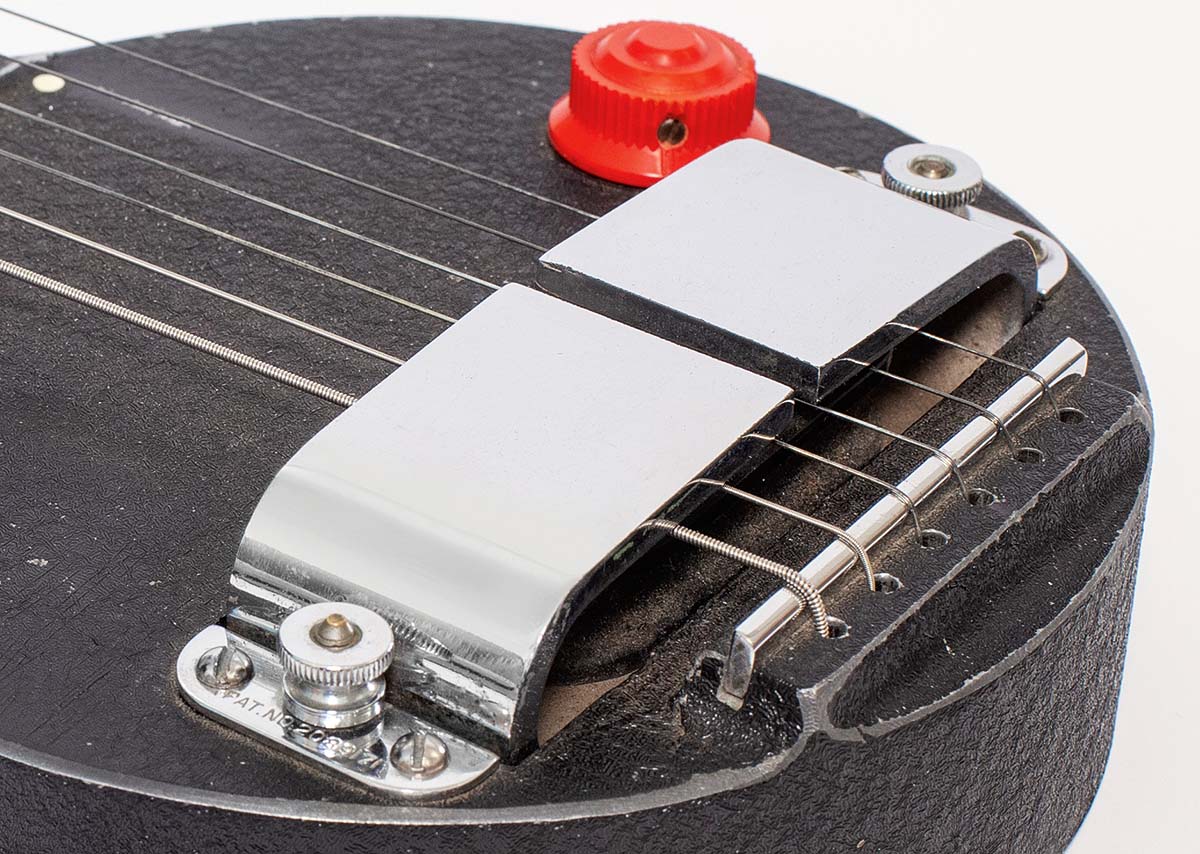Rickenbacker guitar pickups: what you need to know
Martin Kelly – author of Rickenbacker Guitars 1931-1999: Out Of The Frying Pan Into The Fireglo – straightens out the subject of Rickenbacker pickups

“Rickenbacker co-founder George Beauchamp invented the electric guitar pickup in 1931 but they didn’t start manufacturing electric instruments until late 1932,” says Martin. “His pickup design featured two large horseshoe-shaped magnets to boost the signal, necessary because the suitable amplification was yet to be developed, plus the original coil slugs were made from non-magnetised ferrous metal. Pioneering times!
“The original application of the horseshoe pickup wasn’t just for ‘frying pan’ lap steels; Rickenbacker launched an electric Spanish guitar at exactly the same moment.
“Interestingly though, their very first ‘Electro Spanish’ featured a revolutionary 17th fret neck joint. Beauchamp was clearly aware of the electric guitar’s potential from the outset as players could now solo up the dusty end and actually be heard!
“Although the horseshoe was well suited to lap steels, it was actually the thing that held Rickenbacker back. They were very slow in realising their design wasn’t suited for Spanish-style playing as its huge magnets cover the strings in the exact spot where the player needs access. Rickenbacker’s competitors, companies like Gibson and Vega, initially copied the horseshoe concept but quickly abandoned the idea and moved on to designs that sat under the stings, out of the way.”
1. Horseshoe

“The horseshoe pickup definitely held up Rickenbacker’s progress in the electric-Spanish field, but they were having such success with their lap steels they probably weren’t too bothered. The horseshoe is incredible for steel playing; it has one of the best tones you could ever hope for in that regard.
“For a long time – during [co-founder] Adolph Rickenbacher’s reign – Rickenbacker weren’t equipped to build their own electric Spanish guitars; bodies and necks were outsourced from National and Kay. So, it wasn’t in their culture to design an electric guitar completely from the ground up.
“However, when F.C. Hall bought the company in 1953, he inherited a ton of horseshoe pickups, so it was only logical that he designed guitars to carry those. The first horseshoe solidbody Rickenbackers from that period – the model 600 and model 800 – came out in 1954. It wasn’t until 1956 that Rickenbacker introduced a guitar without the horseshoe.”
All the latest guitar news, interviews, lessons, reviews, deals and more, direct to your inbox!
2. DeArmond

“Rickenbacker were major players in the lap-steel market, which was huge back then, but, during the 30s and 40s, it was Epiphone and Gibson who were really pushing the design of the electric guitar forward. So, Rickenbacker sort of fell behind.
“The first Rick models with conventional single-coil units came in 1956 with the arrival of the 400 series ‘tulip’ guitars. The early tulips also used a radical design for the time, which featured a neck-through-body with wings literally bolted on to the sides.
“F.C. Hall had the pickup made by DeArmond (Rowe Industries). It didn’t have a model name as far as I know, and I’ve never seen it on another guitar. It’s pretty rare and only appeared for about a year or so between 1956 and 1957. In mid ’57, F.C. decided to design his own pickup that sat under the strings which is when the famous ‘toaster’ was developed.”
3. Toaster

“The single coil ’toaster’ pickup was introduced in September ’57 and would soon become a Rickenbacker classic. It’s called a ‘toaster’ because it looks like the top of an old-fashioned chrome toaster viewed from above.
“Compared to other pickups it has a fairly low output, but it has that particular chime and jangle we know Rickenbacker for today. It’s not everybody’s cup of tea, but it gave Rickenbacker instruments their unique, inherent sound.
“The toaster appeared on the tulip guitars first of all in ’57: the [single pickup] model 400 and twin pickup model 450. Then, during ’58, F.C. introduced the Roger Rossmeisl-designed Capri range and, from that point onwards, toasters became standard on everything aside from basses and steel guitars.
“The horseshoe suited basses well because it gave a trebly sound players really liked. Nevertheless, Rickenbacker replaced it in ’68 with a new Hi-gain unit with a plastic cover to imitate the original magnets.”
4. Hi-Gain

“By the late 60s, rock music was getting heavier, and musicians were demanding something else out of their guitars. Rickenbacker realised this and came out with the Hi-gain pickup. It is essentially the same pickup as the toaster, but with increased winding and exposed adjustable polepieces.
“The Hi-gain pickups were introduced on Rickenbacker guitars in early ’69 and they’re definitely a lot more versatile. They’ve got a fuller, bassier tone, but you can still get the classic Rickenbacker chime out of them. Peter Buck, Johnny Marr and Guy Picciotto [Fugazi] have put them to good use over the years.
“The Hi-gain is fitted to most standard Rickenbacker models today, but their vintage-style guitars feature toasters. In ’73, John Hall developed a Rickenbacker humbucker that has a great tone but aside from rare exceptions those were only really seen on the bass-shaped 481 guitar.”
- Rickenbacker Guitars: Out Of The Frying Pan Into The Fireglo by Martin Kelly is available to pre-order now via Phantom Books.
Rod Brakes is a music journalist with an expertise in guitars. Having spent many years at the coalface as a guitar dealer and tech, Rod's more recent work as a writer covering artists, industry pros and gear includes contributions for leading publications and websites such as Guitarist, Total Guitar, Guitar World, Guitar Player and MusicRadar in addition to specialist music books, blogs and social media. He is also a lifelong musician.

